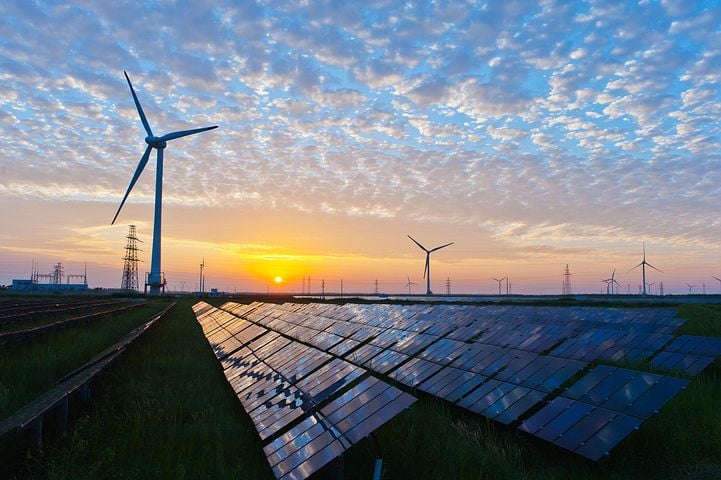Rapid electrification of the world’s energy system will spur energy efficiency to improve at a faster pace than global economic growth, resulting in a plateau in energy demand from 2030.
So concludes a new report that says “the world is approaching a watershed moment” with massive shifts occurring in the way it produces and uses energy between now and the middle of the century.
 By 2050, renewables will represent around half of the world’s energy mix. Image: pixabay-1330214
By 2050, renewables will represent around half of the world’s energy mix. Image: pixabay-1330214
The report, titled Energy Transition Outlook, from the quality assurance and risk management company DNV GL, forecasts that, by 2050, energy-related CO2 emissions will have halved.
The rapid decarbonization of the energy supply will come from a continued rise in renewable energy sources, driven largely by wind power and solar photovoltaics (PV).
At present, fossil fuels represent 81 percent of the world’s energy mix, but by mid-century, they will have an almost equal share with renewables.
DNV GL forecast that fossil fuel’s decline will occur differently for coal, oil, and gas.
Oil will gradually lose its dominance as a source of heat and power. DNV GL predict that demand for oil is set to plateau from 2020 to 2028.
Oil will then fall sharply as rapid electrification penetrates the transport sector and electric vehicles become more widespread. By 2033, “half of new light vehicle sales globally will be electric.”
By mid-century, gas will be the biggest single source in the world’s energy mix, having surpassed oil in 2034 and peaked in 2035. Coal has already peaked.
Why is energy becoming more efficient?
When fossil fuel is used to make electricity, a lot of the energy stored in the fuel is lost as heat. Even though some power plants capture some of the heat and use it, on a global scale the losses are still enormous.
When electricity is produced from renewable sources – such as in wind, solar, and hydro power plants – the losses are much smaller.
The losses are so small, in fact, that the electricity these renewables produce is considered “primary energy,” according to the method explained in the report. (The method does not count the wind, sun, and water energy that is not captured.)
Another factor to consider is the rapid electrification of transport, which will also reduce the consumption of fossil fuels such as petrol and diesel. Currently, the transport sector uses about 27 percent of the world’s energy.
Thus, the greater the amount of renewables in the energy mix, the smaller the losses, and the higher the efficiency. “This is a major reason why the world’s primary energy supply will peak before 2030,” notes the report.
Uncoupling from GDP
DNV GL predict that the next 33 years will also see a gradual uncoupling between energy demand and GDP. In the past, energy demand – along with CO2 emissions – have risen in line with growth in GDP and population.
But rapid electrification, partly due to rising use of renewables, is set to break the link.
Although the world’s economy and population will continue growing, albeit more modestly than in the past, energy demand will flatten and CO2 emissions will fall sharply.
“The world will manage the shift to a renewable future without increasing overall annual energy expenditure, meaning that the future energy system will require a smaller share of GDP,” argue DNV GL.
The scenario they set out in their report suggests that, on a straight comparison, in 2050, the world’s energy will cost less than 3 percent of global GDP compared to the current 5 percent.
‘Wake-up call for government and energy industry’
“As a company, we are highly exposed to the radical changes that will come to every part of the energy value chain,” says Remi Eriksen, Group President and CEO of DNV GL.
He adds that the massive changes they set out in their report have “significant implications for both established and new energy companies. Ultimately, it will be a willingness to innovate and a capability to move at speed that will determine who is able to remain competitive in this dramatically altered energy landscape.”
However, despite the increased efficiency brought on by rapid electrification coupled with a reduction fossil fuels in the global energy mix, the planet is not going to achieve the target set out in the 2015 Paris Agreement. It will not stay within the limit of 2 °C increase – it is set to warm by 2.5 °C, say DNV GL.
Their model “points to a significant overshoot of the 2 °C carbon budget,” says Eriksen, who urges that:
“This should be a wake-up call to governments and decision-makers within the energy industry. The industry has taken bold steps before, but now needs to take even bigger strides.”

